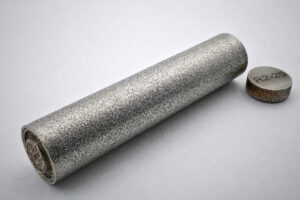3D-printed steel capsules pass nuclear reactor test

The assembled capsule is made from 316H stainless steel that provides high-temperature strength, corrosion and radiation resistance, proven nuclear-grade performance and weldability (Credit: ORNL, U.S. Dept. of Energy)
July 18, 2025 – Oak Ridge National Laboratory (ORNL) has successfully tested two experimental 3D-printed stainless steel capsules in its High Flux Isotope Reactor (HFIR), a milestone that shows additively manufactured components can meet the demanding safety standards of nuclear applications.
The capsules are used to hold sample materials during irradiation experiments, acting as both pressure and containment barriers. This allows researchers to study how materials behave under the extreme conditions inside a reactor while ensuring safe operation.
Produced at ORNL’s Manufacturing Demonstration Facility using a laser powder bed system, the capsules were made from 316H stainless steel. This alloy is valued for its resistance to high temperatures, corrosion, and radiation, as well as for its weldability-qualities that make it reliable for long-term use in reactor environments.
After one month of intense irradiation, the capsules were removed and examined. They maintained their integrity and function, confirming the potential of 3D printing to produce nuclear-grade components. ORNL sees this as a step toward wider adoption of additive manufacturing in the nuclear sector.
HFIR is a DOE Office of Science user facility, and the Manufacturing Demonstration Facility is supported by the DOE’s Advanced Materials and Manufacturing Technologies Office.
The assembled capsule is made from 316H stainless steel that provides high-temperature strength, corrosion and radiation resistance, proven nuclear-grade performance and weldability (Credit: ORNL, U.S. Dept. of Energy)









